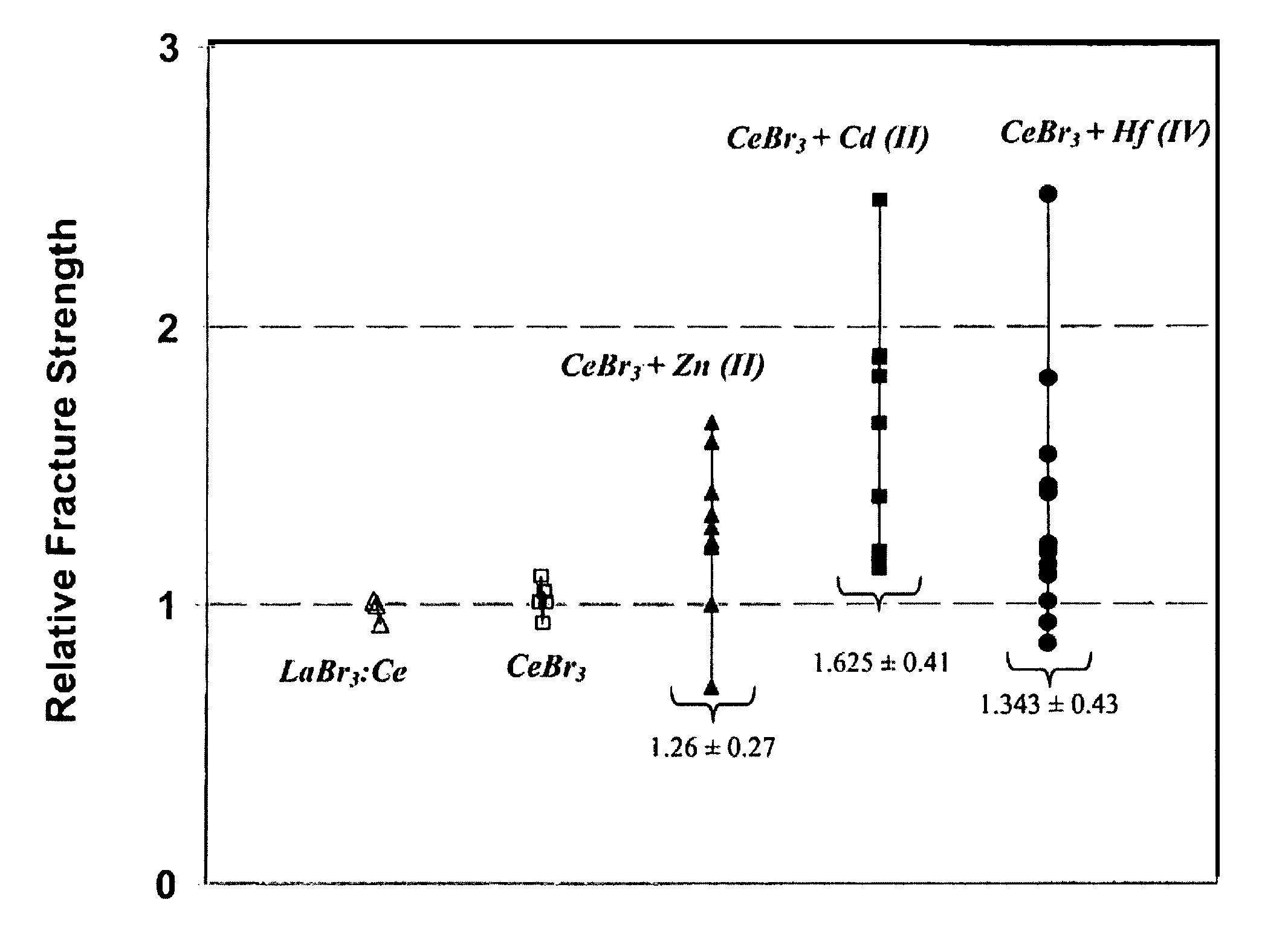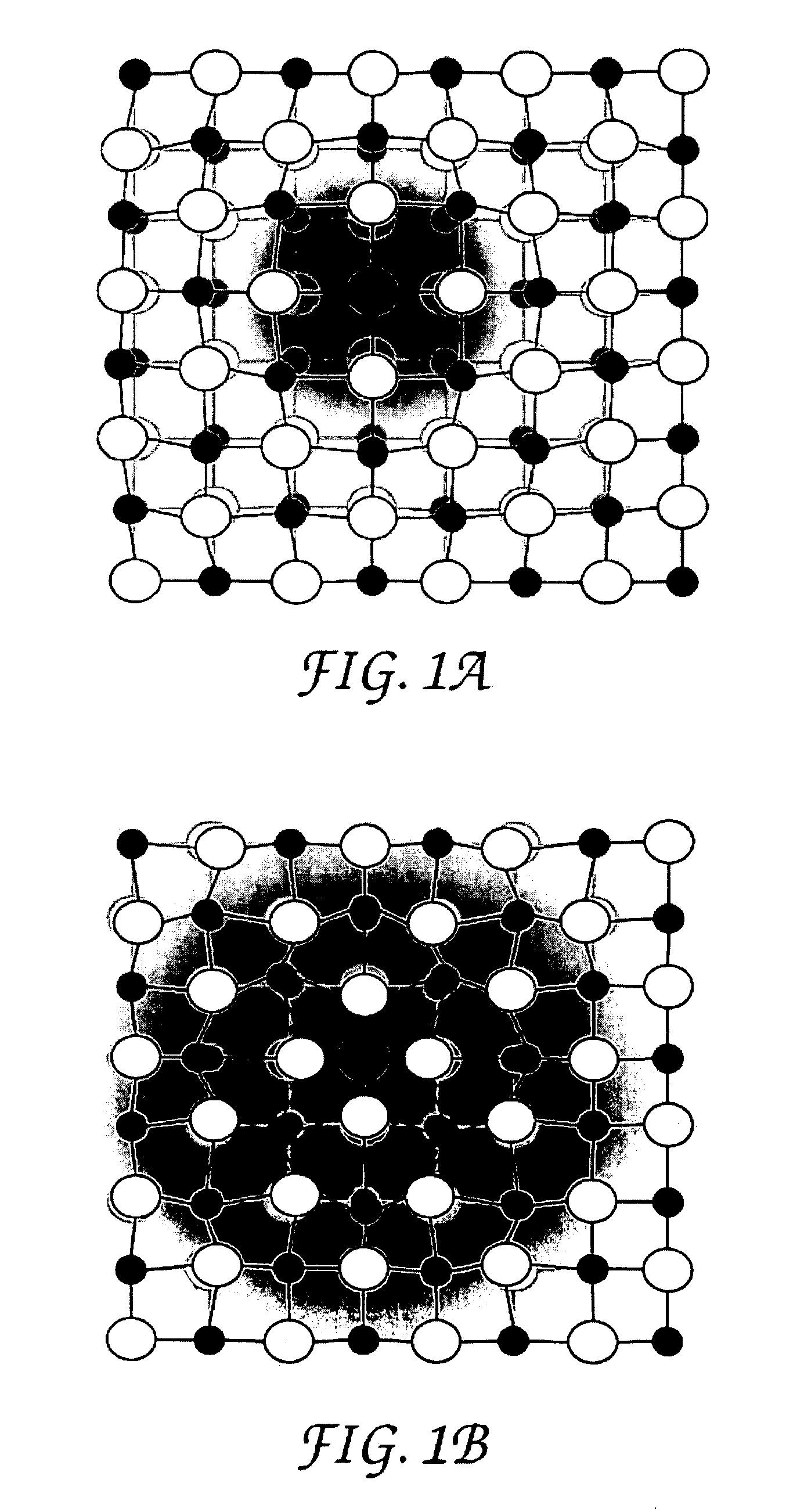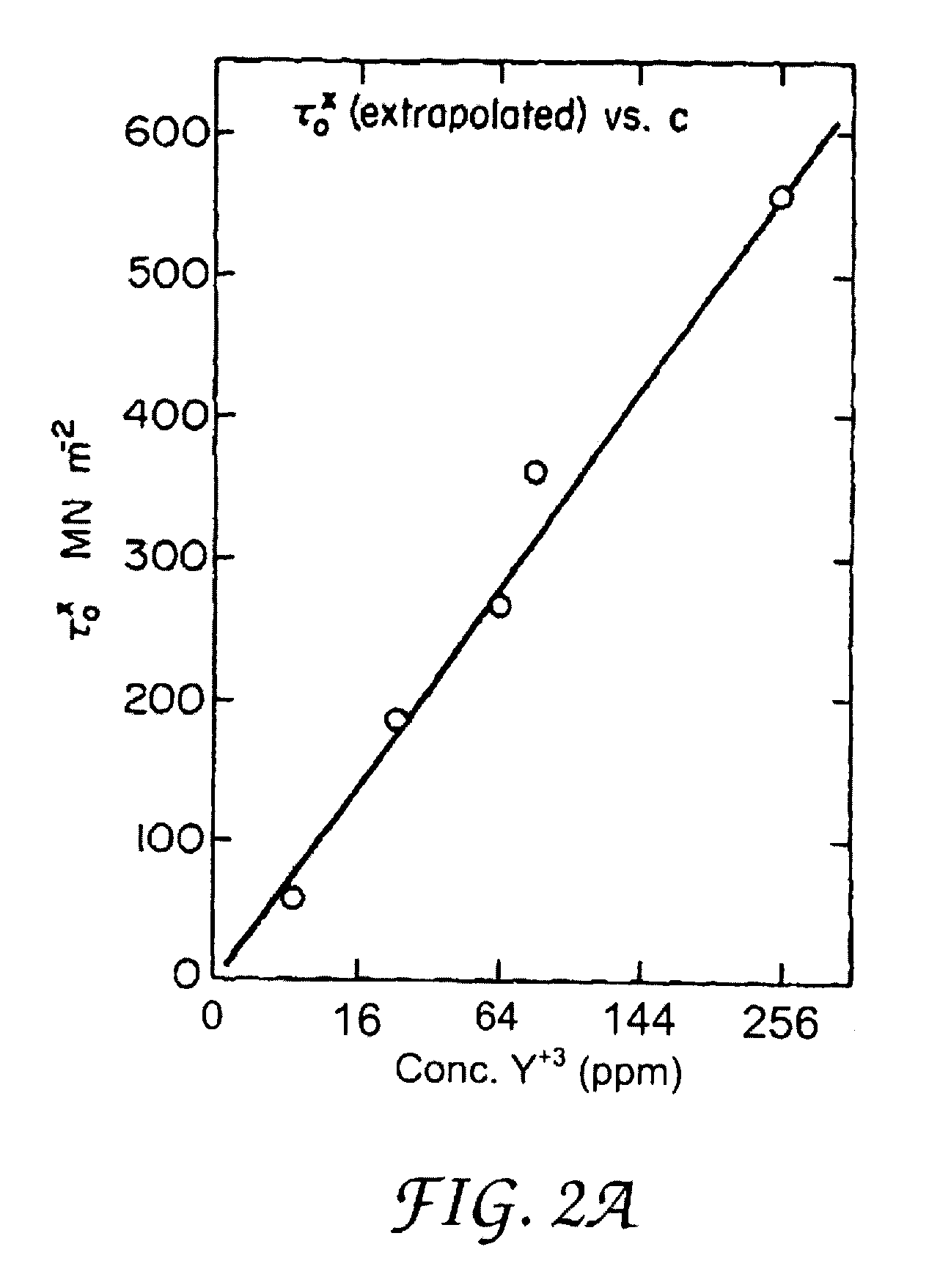Fracture-resistant lanthanide scintillators
a technology of lanthanide and scintillators, which is applied in the field of material compositions used in detecting ionizing radiation, can solve the problems of affecting the quality of lanthanide crystals, so as to achieve sufficient strain and reduce slip
- Summary
- Abstract
- Description
- Claims
- Application Information
AI Technical Summary
Benefits of technology
Problems solved by technology
Method used
Image
Examples
examples
[0047]Initial tests were performed with small 400-600 mg samples of each alloy as well as a control sample of pure CeBr3 in order to test for degrading effects on crystal fluorescence. Twelve (12) crystals were grown using cerium bromide doped with various cations and their fluorescence spectra measured. The test samples were prepared by weighing out the necessary masses of each component in bead or powder form in a nitrogen glove box. Actual sample weights are given in TABLE 1 below. The powders were then placed in 5 in. long, ¼″ OD quartz tubes each having had one of its ends previously flame sealed. After loading the material into the tubes the open end of each tube was attached to a vacuum system with an Ultra-Torr fitting, evacuated to less than 1×10−3 Torr, and then flame sealed approximately 1-2″ above the level of the powders. Each of the sealed ampoule and sample was then individually placed upright into a bench top tube furnace and rapidly heated to 950° ...
PUM
| Property | Measurement | Unit |
|---|---|---|
| energy | aaaaa | aaaaa |
| melting point | aaaaa | aaaaa |
| fracture strength | aaaaa | aaaaa |
Abstract
Description
Claims
Application Information
 Login to View More
Login to View More - R&D
- Intellectual Property
- Life Sciences
- Materials
- Tech Scout
- Unparalleled Data Quality
- Higher Quality Content
- 60% Fewer Hallucinations
Browse by: Latest US Patents, China's latest patents, Technical Efficacy Thesaurus, Application Domain, Technology Topic, Popular Technical Reports.
© 2025 PatSnap. All rights reserved.Legal|Privacy policy|Modern Slavery Act Transparency Statement|Sitemap|About US| Contact US: help@patsnap.com



